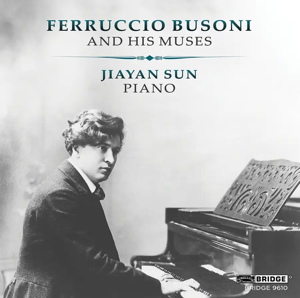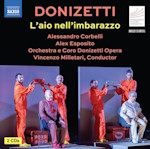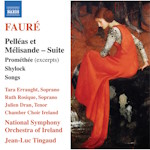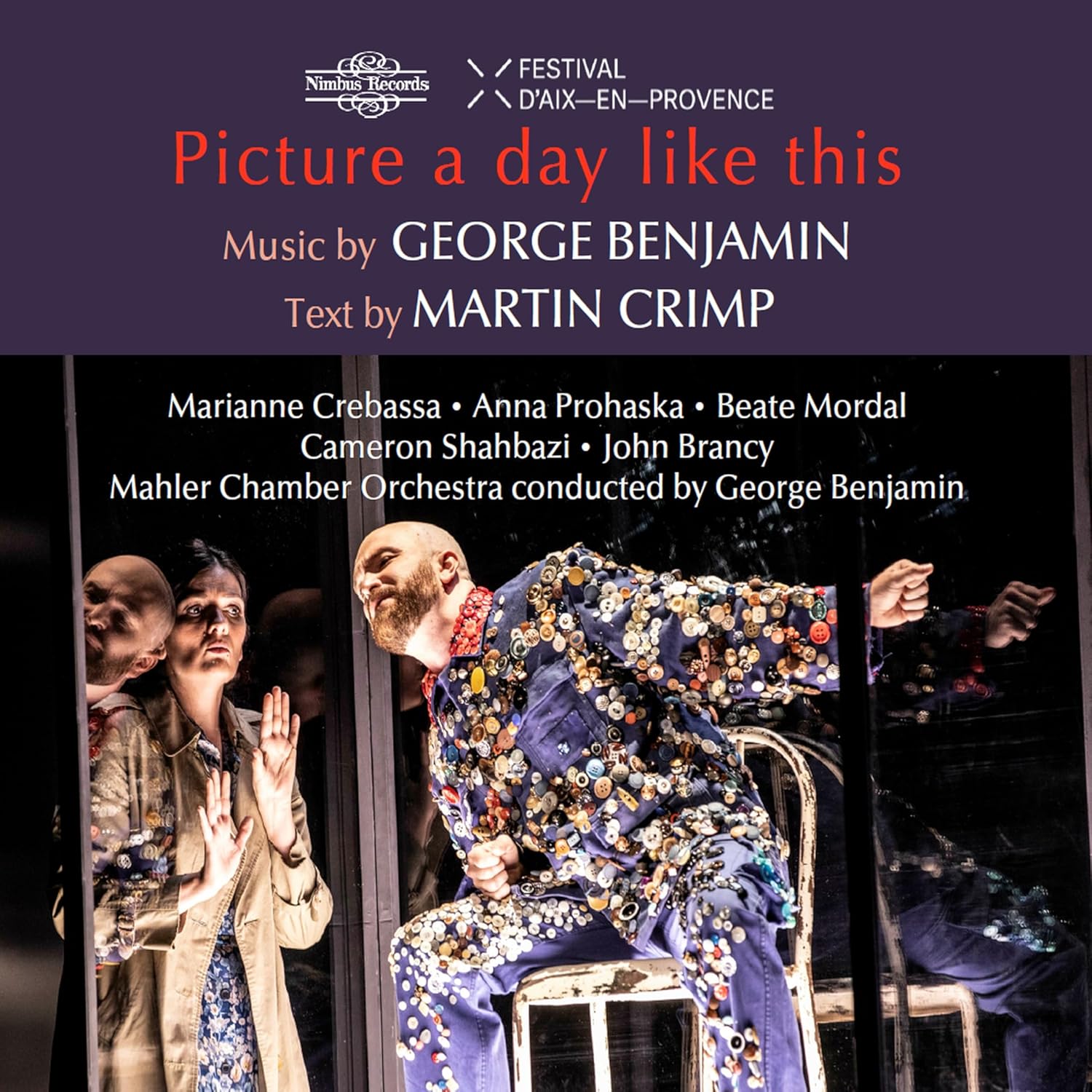
Busoni and his Muses
Jiayan Sun (piano)
rec. 2024, Sweeney Concert Hall, Smith College, Northampton, USA
Bridge Records 9610 [70]
It may be an urban legend that Ferruccio Busoni was greeted as Mr Bach-Busoni by an enthusiastic but misinformed audience member but the idea certainly rings true. Once upon a time unhyphenated Bach would have been a rarity in piano recitals and Busoni’s name would go on to replace Carl Tausig or Eugene D’Albert as the transcriber of choice; the Toccata and Fugue in D minor, the Chaconne, the chorale préludes and others all featured but his connection to Bach goes beyond these organ and violin transcriptions. Quite apart from editing many of Bach’s keyboard works he adapted some for concert performance such as the Goldberg Variations, the Capriccio on the departure of a beloved brother or the Chromatic Fantasia and fugue heard here and many of his original works either build on Bach’s music, such as the Fantasia Contrappuntistica, his extended fantasy on the unfinished fugue from the Art of Fugue or the Fantasia nach Johann Sebastian Bach which Busoni wrote in memory of his father who had introduced him to Bach’s music in his youth. Bach was not his only inspiration however and two other influences, Mozart and Liszt, are also explored here. All three composers come together in the Marriage of Figaro fantasy but he also wrote two adaptions of Mozart concerto movements amongst many other works and Liszt’s études, Mephisto Waltz, Totentanz and Rhapsodie espagnole are just a handful of the many works of Liszt that received the Busoni treatment.
Jiayan Sun opens his recital with Bach in the Busoni edition. In his editions Busoni considered that he was wiping away the accumulated dust of tradition to reveal the original lying fresh underneath but he was still close to the romantic tradition and his introduction of octave doublings, additional fugue entries peeping through the texture and use of the sustaining power of the modern instrument, notably in the written out arpeggio chords alongside a chordal chorale, lie between editing and transcription; this is Bach for the concert grand especially as the work reaches its huge climax. He brings Bach stylings into the modern age with his Toccata: Preludio-Fantasia-Ciaconna; more concise than his fantasia contrappuntistica it features fiercely virtuoso writing in the brisk preludio and chaconne with its variations on a chromatically rising and descending theme which book-end ruminative contrapuntal writing in the episodic fantasia. Busoni takes these old forms from the earliest days of keyboard music and re-invents them in his most advanced harmonic language and with a technique that combines complex counterpoint with Liszt virtuosity. The Fantasia nach Johann Sebastian Bach is an original work but includes settings of three Bach chorales from the partita BWV.766 Christ, der du bist der helle Tag as well as an adaption of part of Gottes Sohn ist kommen BWV.703 and Lob sei dem allmächtigen Gott BWV.602. In 1907 Busoni wrote six elegies and added a seventh, the berceuse heard here, in 1909. It is a gentle piece but also stark and slightly disturbing at times with its bi-tonalities and false harmonies. It became a tribute to his late mother when he arranged and extended it for chamber orchestra as his berceuse élégiaque. The final original work here is the Indian Diary book 1 – book 2 is a work for chamber orchestra. It is based on melodies of native Americans, American Redskins as they are described on the cover, and consists of four short pieces. The first has a theme characterised by a falling semitone and Busoni balances this with rising semitones in the accompaniment before it he inserts several cadenza like passages that presage some of the styles of writing in the other movements such as the extensive use of repeated notes. The second is a bustling piece that to me suggests some kind of insect call and in the absence of guiding titles I will continue to think that until I hear from a more knowledgable source. The third is a beautifully wistful piece, its opening contrasted with a second theme, high in the keyboard’s reaches. In concludes with a return to the opening theme, quite distinctively harmonised with plenty of major/minor juxtapositions but not before the a transformation of the first movement’s theme slips in amongst chromatically-rising chords. The final piece has a rich, warm hymn-like melody that Busoni decorates with a shimmering and inventive veil of figuration bringing this folk-suite to a satisfying conclusion. Busoni is very successful here in interweaving his own harmonic and rhythmic style with the Indian melodies and being a much more approachable example of his later writing I am surprised this isn’t played more often.
His final sonatina is somewhat different than its five companions in that it is a miniature fantasy on Bizet’s opera Carmen, following in the tradition of the operatic fantasy so popular in the 19th century though its occasional angularity and harmonic twists and turns are all Busoni. After a moto Perpetuo based on the bustling scene of street traders at the opening of Act four he takes in Don José’s flower song and the habanera in a setting far removed from Carmen’s swagger though the variations that follow show off her complex character. The energetic Les voici! Voici le quadrille pushes its way to centre stage but in the aural equivalent of a cinematic freeze the mood changes and Carmen is left alone with the her fate in a single dramatically poignant page of music. Mozart’s opera The Marriage of Figaro was a favourite of Busoni’s – and presumably Liszt’s – so it must have been a labour of love for Busoni to prepare a performance edition of the manuscript that Lizt never published though he did perform it and which lay untouched on a library shelf in Weimar. The manuscript also includes music for a fantasy on Mozart’s Don Giovanni but Busoni excised this material and added a few bars of music, dynamics and articulation. He performed it in 1911, 68 years after Liszt had performed last performed it and it was prepared for publication the following year. Vladimir Horowitz, Egon Petri, Grigory Ginzburg and Emil Gilels are some of the great pianists who added the work to their repertoire and whilst the fireworks of the final pages are guaranteed to bring the house down many of its extreme technical challenges aren’t readily obvious which is why it may not have been taken up as much as say the Réminiscences de Don Giovanni. By way of an encore Sun plays Busoni’s transcription of the serenade from Mozart’s Don Giovanni, a Variation-Studie found in part three, staccato playing, of his Klavierübung, the piano tutorial in five parts that occupied the final seven years of his life. Despite its relative brevity it is another challenging piece that Jiayan Sun plays with consummate ease, as he does throughout this recital.
I enjoyed this album immensely. Sun’s playing is exemplary and while he has the fingers to throw off the myriad challenges that Busoni places in the path of the performer he is also able to display a lovely sense of line, keen contrapuntal sense and impeccable timing and rubato. Recorded in wonderful sound this is a well-constructed and considered recital that contains music making of as high a standard as you are likely to hear. More please.
Rob Challinor
Buying this recording via a link below generates revenue for MWI, which helps the site remain free.



Contents
Johann Sebastian Bach (1685-1750)
Chromatic Fantasia and Fugue BWV903 (arr. Ferruccio Busoni 1915)
Ferruccio Busoni (1866-1924)
Toccata: Preludio-Fantasia-Ciaconna BV287 (1920)
Elegy No.7 Berceuse BV252 (1909)
Fantasia nach Johann Sebastian Bach BV253 (1909)Indianisches Tagebuch Book 1 BV267 (1915)
Sonatina No.6 Chamber fantasie on Bizet’s Carmen BV284 (1920)
Franz Liszt (1811-1886)
Fantasie on Two Motifs from W.A.Mozart’s Marriage of Figaro (1842, ed. Ferruccio Busoni)
Ferruccio Busoni
Variation study after Mozart from Klavierübung Part 3 (1921, transcription of the Serenade from Don Giovanni)

















